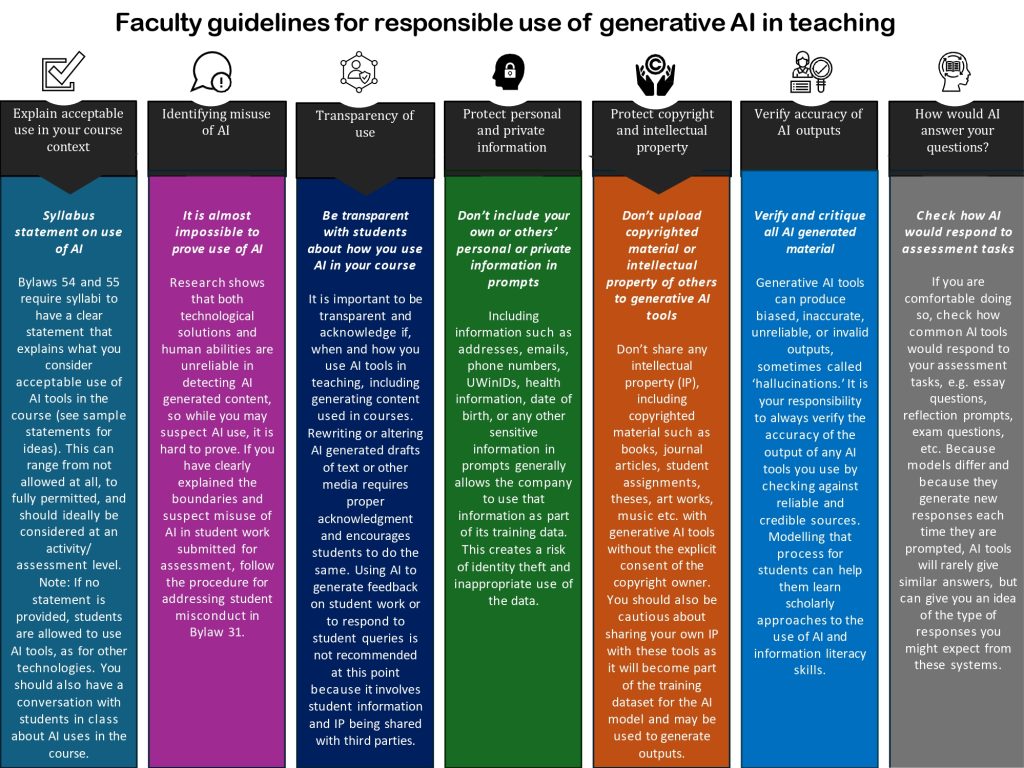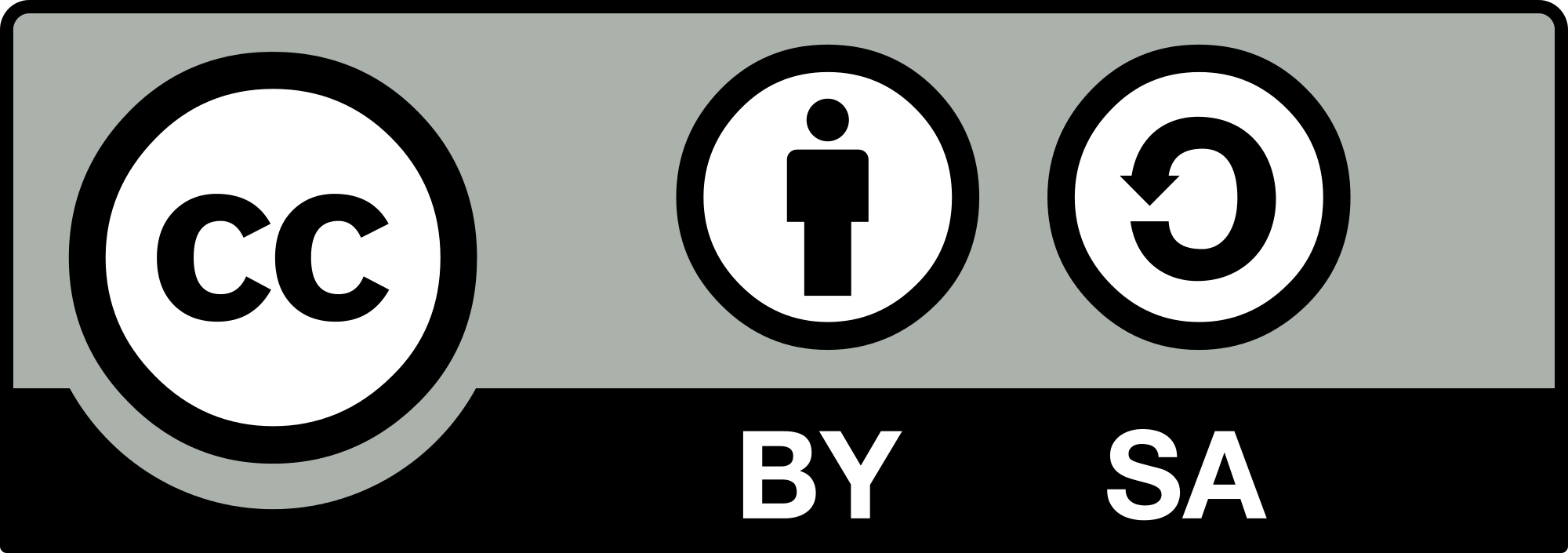Educator Guidelines
 Download a Instructor guidelines for responsible use of generative AI in teaching.
Download a Instructor guidelines for responsible use of generative AI in teaching.
Acceptable Use in Course Context: Instructors must include a clear statement in their syllabi regarding the acceptable use of AI tools, as required by Bylaws 54 and 55. This can range from not allowed to fully permitted and should be considered at the activity or assessment level. If no statement is included, students are allowed to use AI tools. It’s also recommended to discuss AI use with students in class (University of Windsor, 2024).
Identifying Misuse of AI: Proving the use of AI is challenging due to the unreliability of both technological solutions and human abilities in detecting AI-generated content. If misuse is suspected, follow the procedure for addressing student misconduct as outlined in Bylaw 31 (University of Windsor, 2024).
Transparency of Use: Instructors should be transparent about their use of AI in teaching, including generating course content. Proper acknowledgment is required when rewriting or altering AI-generated drafts. Using AI to generate feedback on student work or respond to queries is not recommended due to privacy concerns (University of Windsor, 2024).
Protect Personal and Private Information: Avoid including personal or private information in AI prompts to prevent identity theft and inappropriate use of data (University of Windsor, 2024).
Protect Copyright and Intellectual Property: Do not upload copyrighted material or intellectual property to generative AI tools without explicit consent from the copyright owner. Be cautious about sharing your own IP as it becomes part of the AI model’s training data (University of Windsor, 2024).
Verify Accuracy of AI Outputs: Always verify and critique AI-generated material for accuracy, as AI tools can produce biased or unreliable outputs. This process should be modeled for students to enhance their information literacy skills (University of Windsor, 2024).
How AI Would Answer Your Questions: Instructors can check how AI tools respond to assessment tasks to understand the type of responses these systems might generate (University of Windsor, 2024).
For more information, visit Generative AI for Instructors | Artificial Intelligence (new tab).
Remember, the primary goal of AI is not to replace rather compliment the educator’s role in a students success. True education not only encompasses textbook knowledge but also thought-provoking questions that motivate students to develop critical thinking.
Reference
University of Windsor. (Retrieved on December 19, 2024). Generative AI for instructors. Retrieved from Generative AI for Instructors | Artificial Intelligence
Creative Commons License

Artificial Intelligence in Higher Education © 2025 by Dr. Tranum Kaur, Ayah Malouhi, and Tasfia Tahiat is licensed under CC BY-SA 4.0

